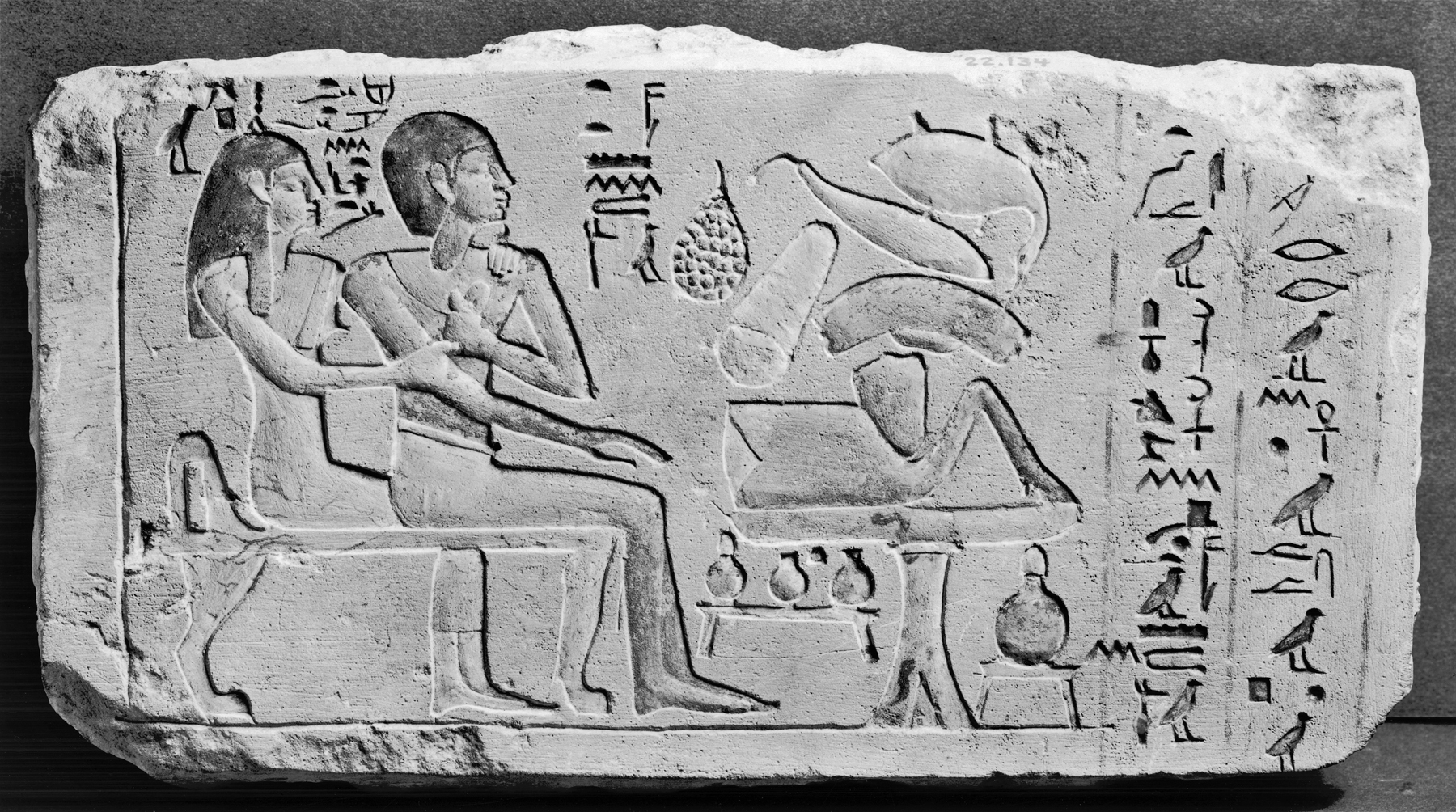Relief with Husband and Wife
(Ancient Egypt and Nubia )
The sculptor Mentu-user and his wife Hepu are shown seated before a table heaped with various offerings, including a haunch of beef, a goose, and a bunch of grapes. The inscriptions beside their heads identify them. Note that the hieroglyphs face in the same direction as the figures. The two columns of hieroglyphs on the right are a request to the living to recite the offering text calling for fowl and a thousand loaves of bread for Mentu-user. The red flesh tone of the man and the yellow of the woman are an artistic convention to differentiate the sexes.
Inscription
Provenance
Provenance (from the French provenir, 'to come from/forth') is the chronology of the ownership, custody, or location of a historical object. Learn more about provenance at the Walters.
Dikran Kelekian, New York and Paris, [date and mode of acquisition unknown] [said to be from Luxor]; Henry Walters, Baltimore, 1913, by purchase; Walters Art Museum, 1931, by bequest.
Conservation
| Date | Description | Narrative |
|---|---|---|
| 8/31/1998 | Examination | survey |
| 1/22/2001 | Treatment | cleaned; loss compensation |
Geographies
Egypt (Naga ed-Dêr) (Place of Origin)
Measurements
6 1/2 x 11 5/8 x 2 3/8 in. (16.5 x 29.5 x 6 cm)
Credit Line
Acquired by Henry Walters, 1913
Location in Museum
Accession Number
In libraries, galleries, museums, and archives, an accession number is a unique identifier assigned to each object in the collection.
In libraries, galleries, museums, and archives, an accession number is a unique identifier assigned to each object in the collection.
22.134


